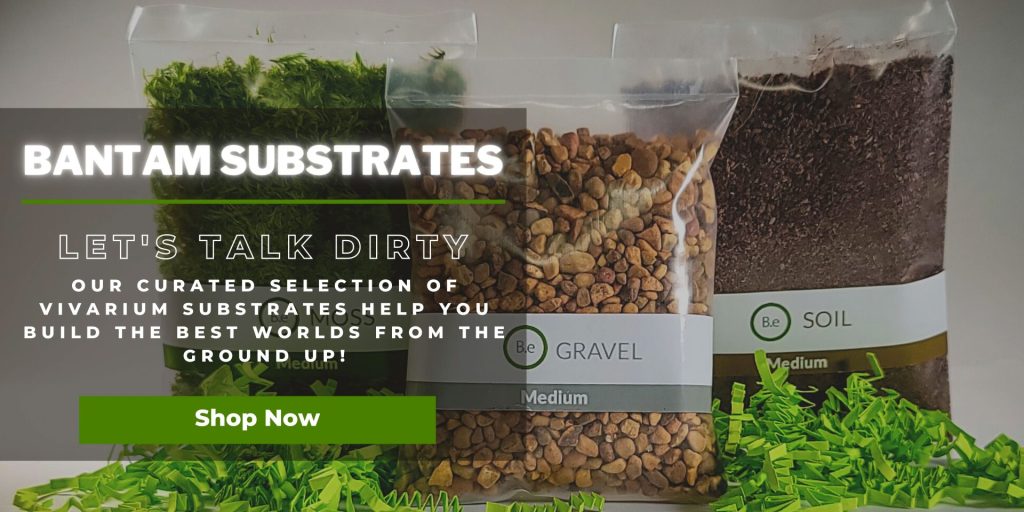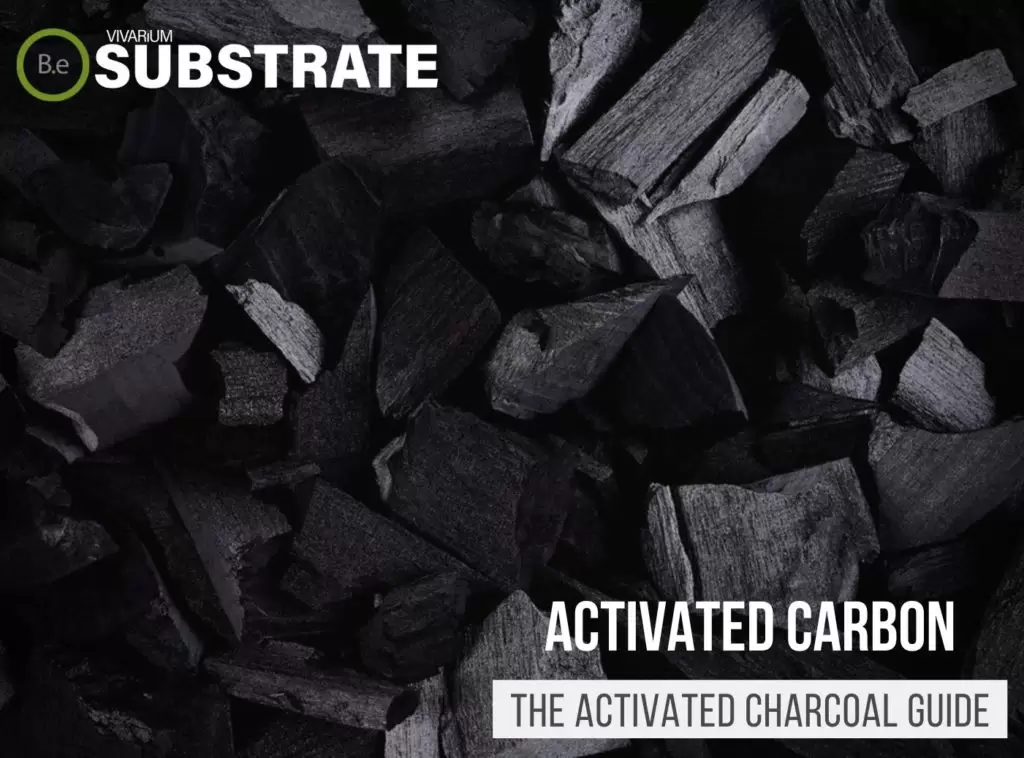If you are a seasoned veteran in the orchid-keeping hobby, then you already know the potential behind tree fern fiber.
Even those who have experience with amphibians and reptiles know that this material can be extremely beneficial when used in vivariums.
For those of us who might be reading about the unique fern wood for the first time, this article will provide an in-depth guide to what it is and how to use it.
Table Of Contents:
ToggleWhat Is Tree Fern Fiber?
Tree fern fiber is a tiny, stick-like material harvested for its use as a substrate for plants and animals.
In horticulture, epiphytes and other moisture-thriving plants like orchids or ferns find compost excellent for retaining air and moisture in roots.
In the vivarium hobby, amphibians and reptile caretakers find this media great for building backgrounds or adding them to a soil mix.
Furthermore, Tree fern fiber will either come in precut panels or be grounded into peat form.


Tree Fern Fiber Facts
Tree fern fiber can come from a number of tree fern species.
There are over 700 known species today, many of which have become extinct due to human intervention.
Furthermore, the most commonly sold tree fern products on the market today will more than likely come from the dicksonia or cynathea species.
Fern wood or tree fern wood are also common ways to refer to resourceful material.
Depending on the form in which tree fern wood is processed, it can be considered a tree fern panel or tree fern peat.
Description
Tree fern fiber resembles small twigs bunched together.
This material will vary in color and texture depending on the species it is harvested from.
Cyathea species are dark brown and will have a brittle texture to them.
This species is often classified as a hard tree fern.
Dicksonia species are more reddish-brown.
This kind of tree fern is typically softer and more porous than other species.
They are classified as soft tree ferns.
Origin
Tree fern plants grow in tropical to subtropical environments.
South America and New Zealand are the more popular areas to find these plants exported from.
Cyathea species grow on both continents but Dicksonia is exclusively found in New Zealand.
When tree fern fiber is harvested from the plants, trunks of the tree-like plant are cut into panels and either sold as is or further ground into peat for use as a substrate.
The trunk that makeup tree fern is, in fact, the plant’s root structure.
This is why the fiber maintains such a course stick-like appearance when processed.
Environmental Influence
One of the great things about tree fern fiber is its lack of influence on the enclosure it is being used.
Even though tree ferns are grown in acidic soils, the plant material is mostly neutral when used as a substrate in itself.
Over time, salts accumulate due to high water retention, which can lead to alkaline levels rising at a much later point.
Vivarium Type
Tree fern peat, as well as panels, are useful in various types of vivariums.
In biotypes made up of mostly land, both forms of tree fern fiber will do extremely well as background pieces, hardscape material, and substrates.
Avoid using this material in aquatic setups like aquariums as there are far better resources that will compensate as a substrate and not float.
Here is a recommended list of vivarium types compost is commonly used in:
- Paludariums – Half aquatic/ half terrain-based enclosure.
- Terrariums – Fully terrain-based enclosures with little to no aquatic features.
Vivarium Usage
Tree fern fiber has a very specific purpose when used in vivariums… retain water and provide aeration to roots.
This can be established in a number of creative ways depending on the form it is being used.
Just about all plants can benefit from this material in one way or another.
Inhabitants will also find tree fern fiber beneficial when used correctly in either panel form or loose fiber.
Tree fern panels have been recognized as the go-to material for many orchid keepers.
In a terrarium, walls can be constructed and used as background covers for many epiphytes to anchor to.
The natural surroundings tree fern panels create will turn any enclosure into a comfortable habitat many amphibians and reptiles feel comfortable residing.
When panels are grounded into peat, tree fern fiber can be used as a source of substrate animals will also feel at home in.
The scent and structure of tree fern peat encourage the natural digging instincts of burrowing inhabitants.
Epiphytes can also thrive for a period of time when planted directly into this form of substrate due to their ability to keep oxygen around the roots.
Tree fern peat is also very commonly used as an additive to soil mixes and works great for other types of vivarium plants when used this way.
Advantages
The biggest pro of tree fern fiber is its ability to retain water.
Especially soft tree ferns like the Dicksonia species.
This material is highly absorbent making it comparable to compost like sphagnum peat and coco fiber.
In addition, its stick-like structure makes it great for providing air pockets near roots.
Another great aspect of tree fern products is their rate of decay.
It decomposes at a very slow rate making it ideal for long-term use.
Disadvantages
On the contrary, once tree fern fiber does start to decay, it will lose its water retention and aeration capabilities.
The opposite effect will begin to take place, smothering roots, and drowning them in a sloth of saturated substance.
The other negative to many plant growers is its inert factor.
Tree fern material on its own provides very little nutrients.
Supplements must be added if the material isn’t used as a soil additive.
Furthermore, the build-up of salts over time can cause negative progress in livestock that thrive in acidic conditions.
Buy Tree Fern Fiber
When buying tree fern fiber in various forms, shop with companies that know how to properly process the compost.
Manufacturers should be open about how they maintain this material and where it is being harvested.
Tree ferns are becoming harder to acquire due to overharvesting.
Always go with a company that is transparent about its practices and mindful of the environment.
Click the image below to find out more about the current price and other relative info:


Tree Fern Fiber Preparation & Usage
Preparing tree fern fiber for a vivarium will more than likely involve rehydrating and breaking up.
Many companies sell the product in its natural compressed panel form to save on shipping and offer the material at a cheaper expense.
If your intentions are to use tree fern in its peat form, some additional labor should be expected if it’s not bought already grounded.
Once prepared, simply add it to the vivarium as needed or combine it into a powerful substrate mix that will benefit that specific enclosure’s biotype.
Tree Fern Fiber Alternatives
When it comes to compost, there are an array of options one could consider.
It mainly comes down to preference and intent of use.
Tree fern fiber has its share of benefits, but there are downsides to using it solely.
If you’d like to see other options or looking for other grow media to combine with this compost…
Here are some good suggestions for secondary layer substrate alternatives you may consider:
Conclusion
In summary, tree fern fiber is excellent for land-based vivariums that are relatively high in humidity.
It can become the ultimate substrate when paired with other compost or a humble material when used on its own.
When acquiring tree fern material, be mindful of its scarcity and use it sparingly.
I would recommend tree fern fiber from New Zealand because of its availability as well as quality.
This fibrous byproduct is a long-lasting, natural substrate that has a multitude of uses.
If you are reading about this type of compost for the first time, what are your thoughts about it?
Frequently Asked Questions
Tree fern fiber is a type of cellulose fiber obtained from certain types of tree ferns. The fiber is extracted from ferns when they reach maturity and can be used in a number of different applications, including papermaking and textile production. Tree fern fiber is known to be longer, more durable, and more heat resistant than other cellulose fibers.
Tree fern fiber is a sustainable, biodegradable material made from the dried and shredded stems of the tropical tree fern (Cyathea cunninghamii). Its unique characteristics make it perfect for a variety of applications, including rope, paper, packaging material, and even clothing.
Yes! Tree fern fiber is a sustainable and eco–friendly material. Harvested from tree ferns in tropical rainforests, the fibers can be used for a variety of applications, such as weaving, papermaking, textiles, and construction materials. Using tree fern fiber helps conserve tropical rainforest biodiversity and can help reduce deforestation.
To use tree fern fiber, start by creating a soil mixture with 1 part peat moss, 1 part humus, and 1 part perlite. Add a few tablespoons of tree fern fiber to the mix and blend well. Spread the soil over the bottom of the terrarium and arrange any decor you wish to use. Finally, carefully water the soil and your tree fern fiber terrarium is ready!







